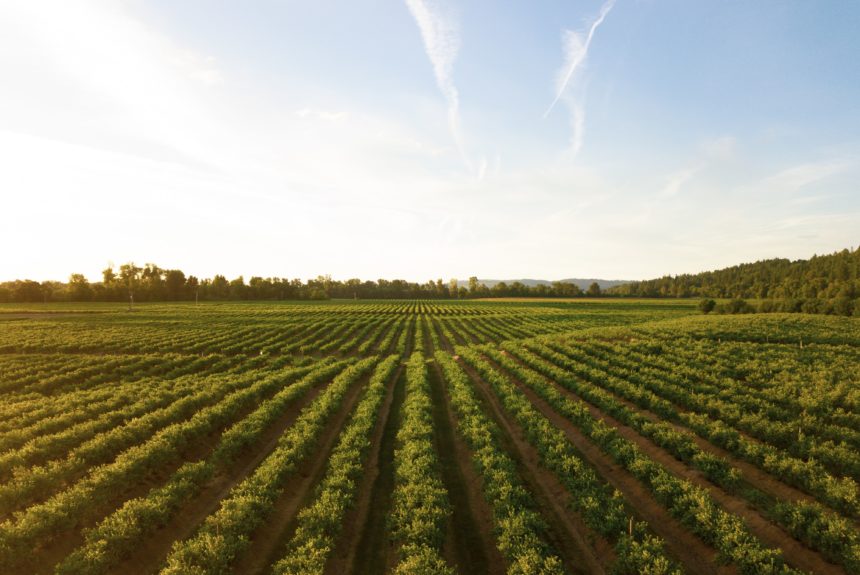When people talk about climate change, they often treat agriculture as an obstacle to the survival of our planet. This is shortsighted and unfair. The truth is that farmers, ranchers, and landowners are some of the world’s most important conservationists. That makes sense: when you own something and are reliant on it for your livelihood, you want to protect and improve it.
Over the past 30 years, agriculture has become cleaner and more efficient. Meanwhile, the innovations that have revolutionized farming are not only benefiting our climate, but also our economy and well-being by producing the food needed to power our society with fewer emissions.
The agricultural sector is an ally, not a foe, in the fight against climate change. Farmers and ranchers across the nation are implementing practices and technologies that benefit both the environment and our economy, and further innovation could significantly reduce our carbon footprint.
Fact vs. Myth
- MYTH: Farmers are largely to blame for climate change.
- Analysis from the Environmental Protection Agency (EPA) shows that agriculture contributes less than 10% of domestic greenhouse gas emissions.
- FACT: Empowering agricultural innovation is part of the solution to climate change.
- FACT: Agricultural innovation has decreased emissions while increasing crop yields.
The Importance of Agricultural Innovation:
- Innovation is already reducing agricultural emissions.
- Since 1990, milk production has increased 71% while the per unit emissions from dairy farming have fallen by almost 25%.
- During the same time, beef production has increased by 50%, while emissions have declined 8%.
- The practice of crop rotation has been shown to decrease nitrous oxide emissions by 35% and increase crop yields.
- Innovative perennial row crops can reduce CO2 emissions to the tune of millions of tons annually by decreasing planting time and sequestering carbon in the soil.
- Since 1990, milk production has increased 71% while the per unit emissions from dairy farming have fallen by almost 25%.
- Agricultural innovation has made farming more efficient.
- The USDA finds farmers are producing more crops with less land.
- When compared to farm production in 1990, farmers need 100 million fewer acres today to produce the same amount of food.
- Precision agriculture technology, such as GPS monitoring and soil and yield mapping, increases crop yields while decreasing input costs for farmers. This makes farming more efficient and less energy-intensive.
- Analysis from the EPA shows that while dairy cow population has declined by 2.6%, milk production has increased by 57%.
- The USDA finds farmers are producing more crops with less land.
- Agricultural innovation benefits the environment.
- Cover crops have been shown to increase the concentration of nutrients in the soil, improving soil health.
- Regions with large numbers of cover crops, such as the Corn Belt Region, have been found to contain higher amounts of carbon concentration in the soil.
- No-till farming practices, which have increased by 8% since 2012 in the U.S., increase the amount of microbial life in soil, making soil more resilient and reducing erosion.
- Cover crops have been shown to increase the concentration of nutrients in the soil, improving soil health.
Markets vs Mandates
- Farmers are unlocking new ways to make agriculture cleaner and more efficient.
- Scientists at the University of Washington have developed a new perennial species of wheat called Salish Blue which holds soil and uses nutrients more efficiently.
- Sustainable farmers such as Justin Knopf are implementing no-till methods to improve soil health and decrease emissions at a large scale.
- Artificial intelligence in agriculture is being implemented, improving crop yields and making agriculture more efficient.
- Federal overregulation stifles agricultural innovation.
- Prior to the USDA’s 2020 SECURE Rule, the approval process for genetically modified organisms (GMOs) took years to complete and cost millions of dollars.
- Tariffs make life more difficult for American farmers and raise the cost of capital.
- A proposed national food policy would result in the government picking winners and losers. That would discourage investments and advancements in agriculture.
- Carbon markets, where farmers and ranchers are paid by companies or individuals to implement methods that reduce emissions, are being pioneered by the private sector. These would rapidly incentivize many of the sound environmental practices described above, by connecting willing buyers of carbon credits with the farmers able to implement these practices.
How to Further Innovate Our Agricultural Sector
- Continue the Agriculture Innovation Agenda through USDA.
- Continue implementing the 2020 SECURE Rule to allow new crop innovations to more easily reach the market.
- Empower farmers and landowners through continued use of USDA conservation programs.
- Reduce unnecessary and burdensome regulations that impede upon the progress of farmers and the agricultural sector.
- Continue agricultural research and development at universities and the USDA.
- Assist in the development of carbon markets, by legitimizing them, standardizing certification procedures, and providing technical assistance.
Summary
- Farmers and ranchers are our nation’s greatest conservationists.
- Over the past 30 years, agricultural innovation has made farming cleaner and more efficient.
- The private sector and landowners are unlocking innovative solutions that reduce emissions and make our agricultural sector cleaner.
- In order to reduce emissions and curb climate change, we should empower farmers and landowners as a part of the solution.


